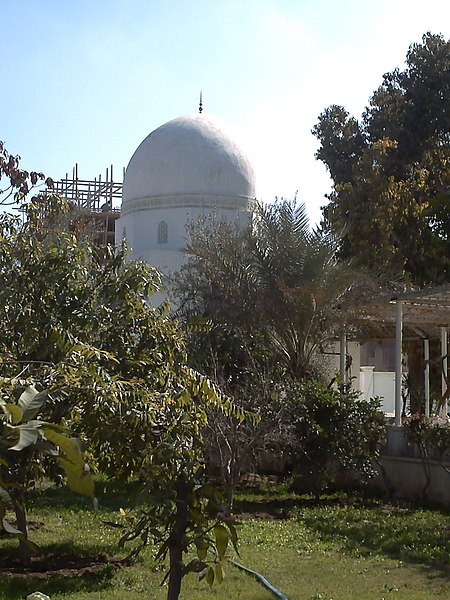Malik al-Ashtar, also known as Mālik bin al-Ḥārith al-Nakhaʿīy al-Maḏḥijīy was, according to Sunni view, one of the people involved behind Uthman's assassination. While, according to Shias, he was one of the loyal companions of Ali ibn Abi Talib, cousin of the Islamic prophet Muhammad. According to them, Malik remained a loyal and avid supporter of Muhammad's progeny and the Hashemite clan. He rose to a position of prominence during the caliphate of Ali and participated in several battles, such as the Battle of Jamal and Siffin against Mu'awiya. His title "al-Ashtar" references an eyelid injury he received during the Battle of Yarmouk.
Mausoleum of Malik Al-Ashtar
Bohra visitors around his grave
Name plate, Mausoleum Malik Al-Ashtar
Sunni Islam is the largest branch of Islam, followed by 85–90% of the world's Muslims, and simultaneously the largest religious denomination in the world. Its name comes from the word Sunnah, referring to the tradition of Muhammad. The differences between Sunni and Shia Muslims arose from a disagreement over the succession to Muhammad and subsequently acquired broader political significance, as well as theological and juridical dimensions. According to Sunni traditions, Muhammad left no successor and the participants of the Saqifah event appointed Abu Bakr as the next-in-line. This contrasts with the Shia view, which holds that Muhammad appointed his son-in-law and cousin Ali ibn Abi Talib as his successor.
Istiqlal Mosque in Jakarta, Indonesia.
The Great Mosque of Kairouan (also known as the Mosque of Uqba) in the city of Kairouan, Tunisia, was, particularly from the 9th to 11th century, an important center of Islamic learning with an emphasis on the Maliki Madh'hab.
Muhammed accompanied by the archangels Gabriel, Michael, Israfil und Azrael. Turkish Siyer-i-Nebi-work, 1595
Historic Quran of Old Dhaka, Bangladesh







